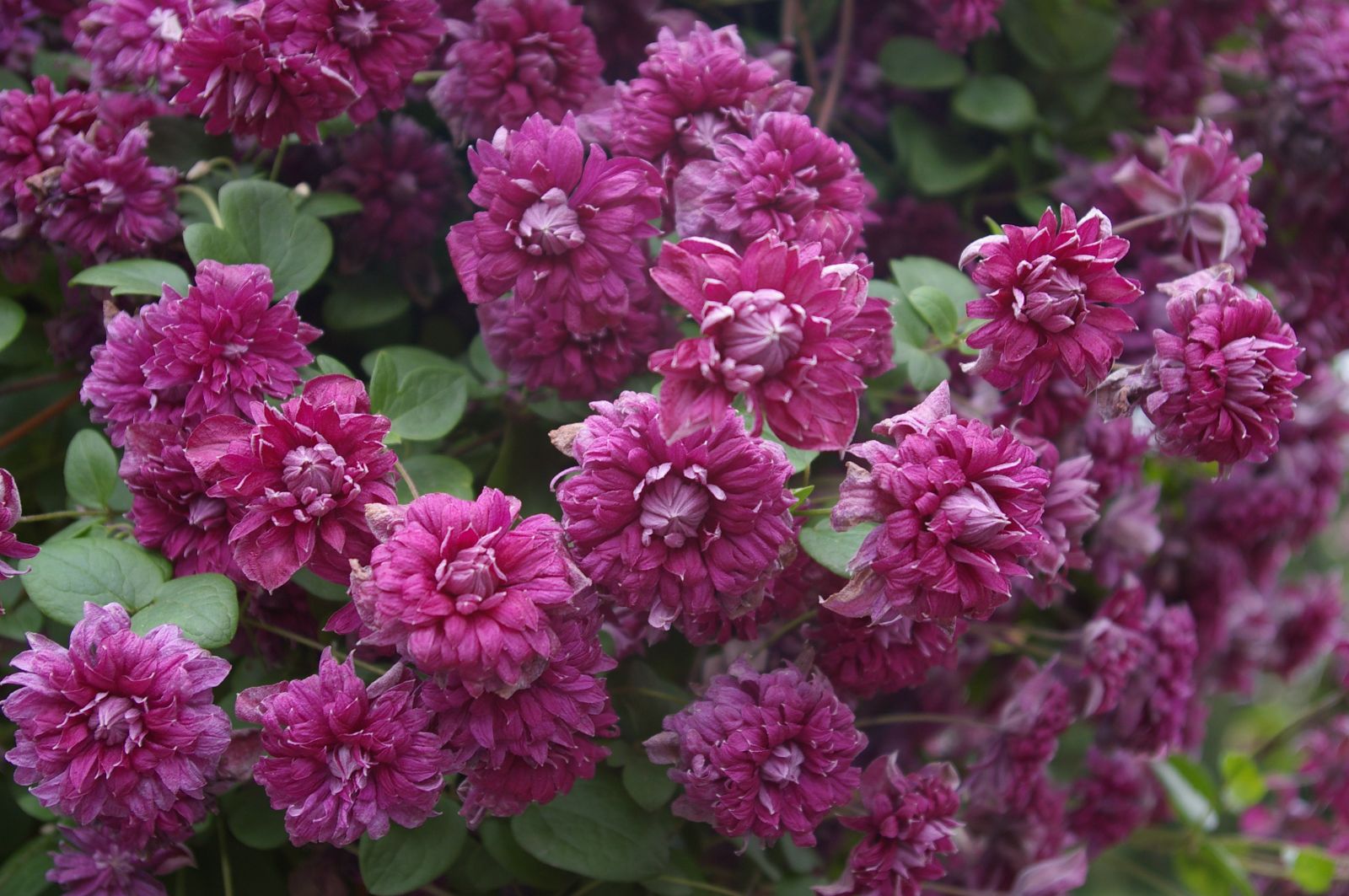Clematis viticella
Credits
Article from Bean's Trees and Shrubs Hardy in the British Isles
Recommended citation
'Clematis viticella' from the website Trees and Shrubs Online (treesandshrubsonline.
Genus
Infraspecifics
Other taxa in genus
- Clematis acutangula
- Clematis aethusifolia
- Clematis afoliata
- Clematis akebioides
- Clematis alpina
- Clematis apiifolia
- Clematis armandii
- Clematis × aromatica
- Clematis campaniflora
- Clematis chinensis
- Clematis chrysocoma
- Clematis cirrhosa
- Clematis connata
- Clematis crispa
- Clematis × durandii
- Clematis × eriostemon
- Clematis fargesii
- Clematis finetiana
- Clematis flammula
- Clematis florida
- Clematis fusca
- Clematis gracilifolia
- Clematis grata
- Clematis heracleifolia
- Clematis integrifolia
- Clematis × jackmanii
- Clematis × jouiniana
- Clematis lanuginosa
- Clematis lasiandra
- Clematis ligusticifolia
- Clematis macropetala
- Clematis maximowicziana
- Clematis meyeniana
- Clematis montana
- Clematis nannophylla
- Clematis napaulensis
- Clematis orientalis
- Clematis paniculata
- Clematis patens
- Clematis phlebantha
- Clematis pitcheri
- Clematis quinquefoliata
- Clematis ranunculoides
- Clematis rehderiana
- Clematis serratifolia
- Clematis songarica
- Clematis stans
- Clematis tangutica
- Clematis texensis
- Clematis tibetana
- Clematis uncinata
- Clematis × vedrariensis
- Clematis verticillaris
- Clematis viorna
- Clematis virginiana
- Clematis vitalba
A deciduous, partially woody climber, growing 8 to 12 ft high; stems slender, ribbed, and slightly downy when young. Leaves 4 or 5 in. long, pinnate, with the primary divisions trifoliolate; leaflets not toothed, but frequently two- or three-lobed, lance-shaped to broadly ovate, 3⁄4 to 21⁄2 in. long. Flowers solitary on stalks 2 to 4 in. long, or several on a branched stalk; each 11⁄2 in. across; sepals obovate, blue, purple, or rosy purple. Seed-vessels broad and short, with very small tails devoid of the feathery covering so common in Clematis. Bot. Mag., t. 565.
Native of S. Europe; cultivated here since the sixteenth century. The type and the double-flowered form were grown in 1597 by Gerard, who says, ‘they grow in my garden at Holborn and flourish exceedingly’. Many charming varieties have been raised in gardens, the double-flowered one just mentioned (‘Plena’) being one of the least attractive, owing to an excessive multiplication of the sepals, which gives the flower a heavy, lumpy aspect.
From the Supplement (Vol. V)
Of the cultivars mentioned on pages 664–5, the following were recommended for the Award of Garden Merit in 1984: ‘Abundance’, ‘Alba Luxurians’, ‘Kermesina’, ‘Royal Velours’. Also on the recommended list were: ‘Etoile Violette’, with deep purple flowers opening flat and about 4 in. wide with cream-coloured stamens; and ‘Venosa Violacea’, with infolded sepals which are white veined with purple at the centre, purple at the edge. Both these are obviously hybrids.
f. albiflora (O. Kuntze) Rehd
Flowers white. It is found wild with the type. C. viticella var. alba of Carrière is a hybrid with C. florida as the other parent.'Flore Pleno'
The old double form with purplish flowers, described above. The name was first used by Weston in 1774 and should not be supplanted by ‘Multiplex’: the var. multiplex of G. Don was intended as a group-name for all the double-flowered kinds (he mentioned another with flesh-coloured flowers).

